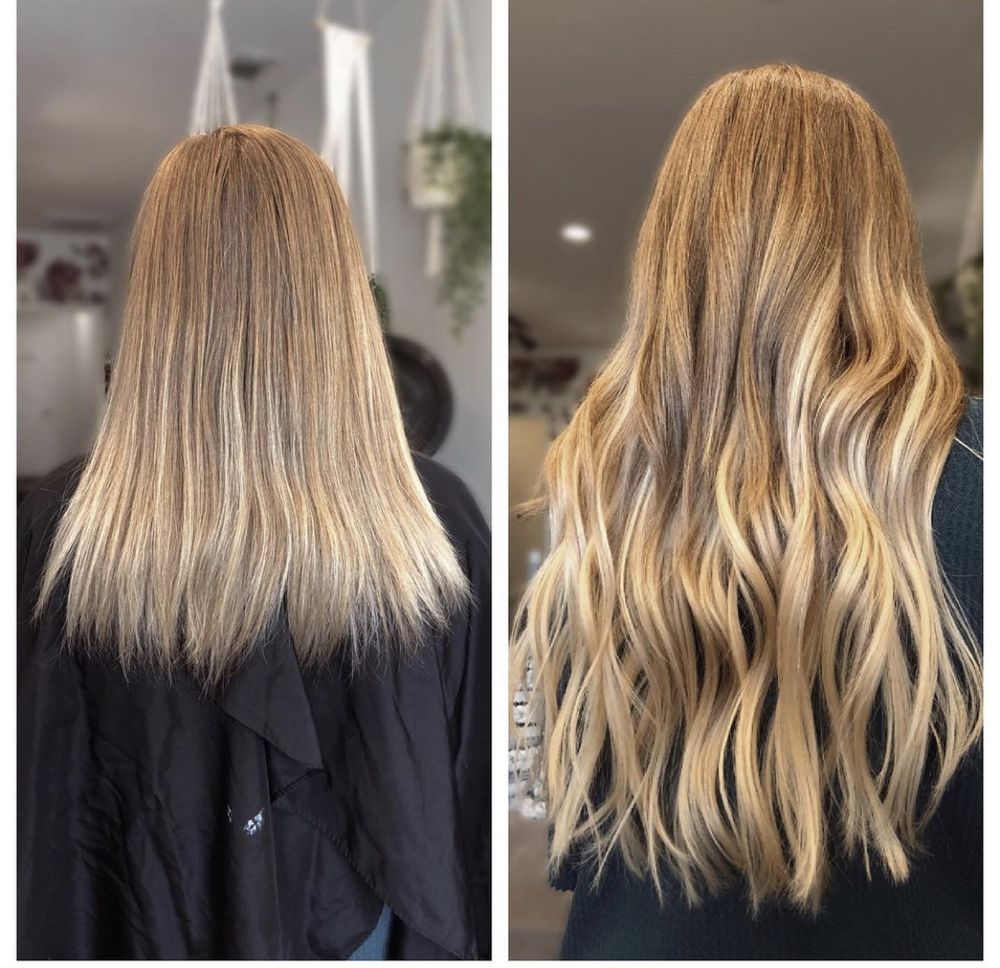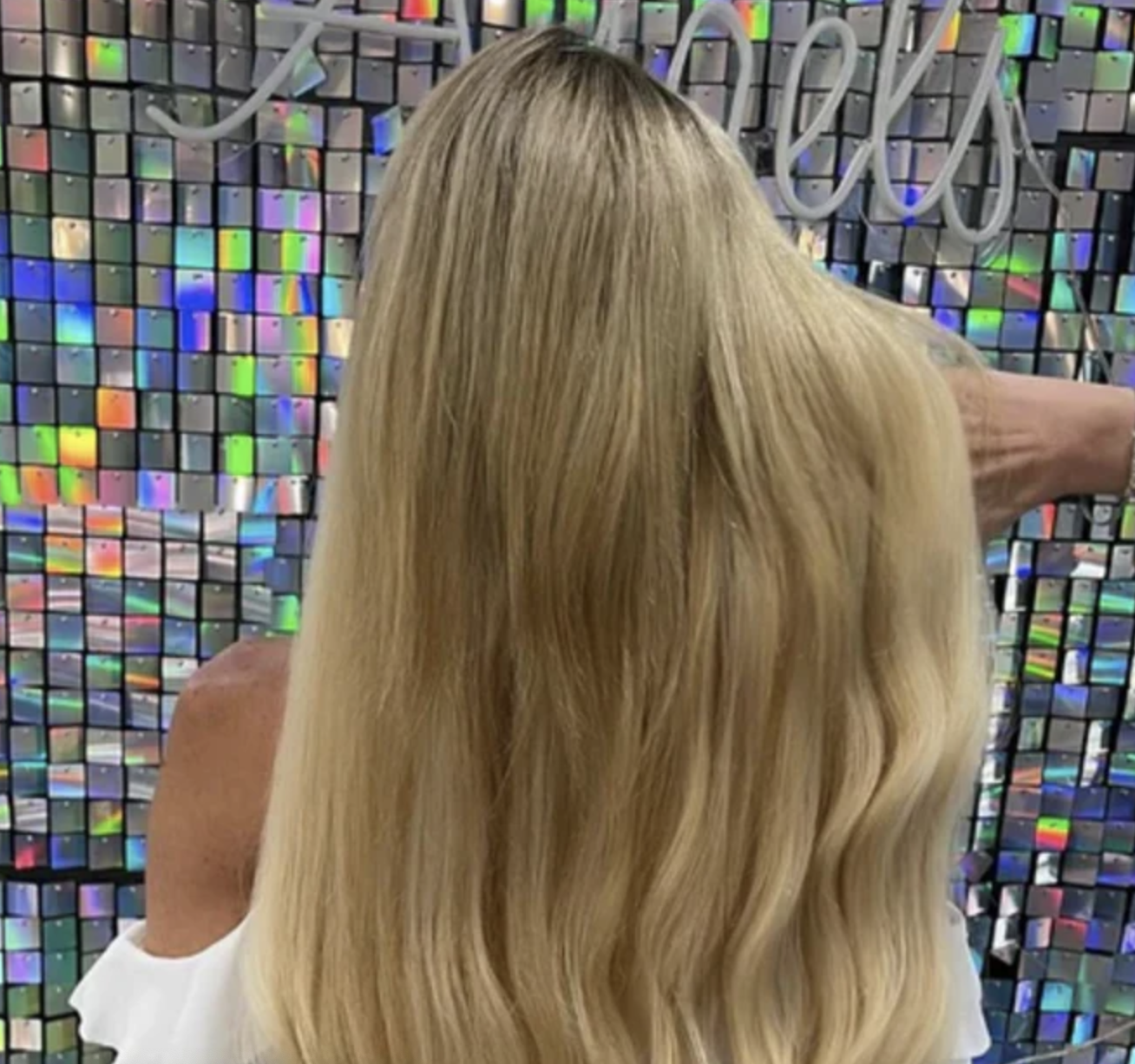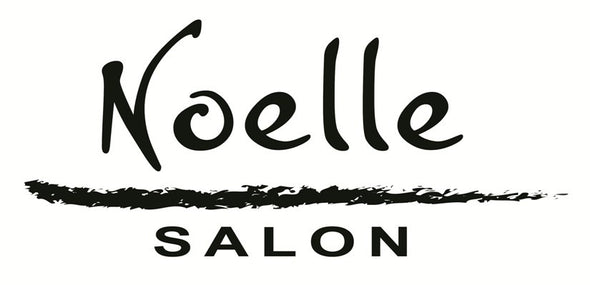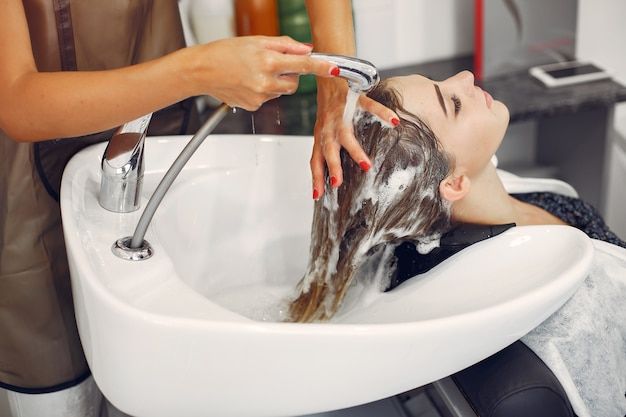Can You Tone Virgin Hair? A Complete Step-by-Step Guide

Can You Tone Virgin Hair? A Step-by-Step Guide

Whether you’re a salon regular or love doing your own hair, you’ve probably heard about hair toning. It’s a simple trick that adds color and shine, helping to fix brassy tones and dull color. Basically, it keeps your hair looking fresh, whether it’s dyed or completely natural.
In this blog, we’re breaking down everything you need to know about toning virgin (never-dyed) hair. We’ll cover what it is, how to do it, what to avoid, and how to choose the right toner without stressing out. Let’s get into it!
What Is Hair Toner?
Hair toner, a prominent product in professional hair color kits, is specifically formulated to address undertones in your hair. It works dynamically to neutralize undesirable hues while also encircling your hair with a burst of shine and gloss. Hair toners, usually carrying minimal amounts of ammonia, fall categorically under semi-permanent hair dye. Albeit it doesn’t drastically alter your hair color akin to hair dye, the semi-permanent nature of it ensures more lasting results.
Importance of Toner in Hair Coloring Process
Hair toners are the unsung heroes of the coloring world—kind of like the cool-down after a workout, but for your hair. Whether you’ve gone platinum blonde or just added a few highlights, toners step in to keep things fresh, balanced, and brass-free, maintaining brightness. Think of them as your hair’s personal color coach, using a bit of color theory magic to cancel out the tones you don’t want and boost the ones you do.
Here’s why hair toners are a must in your color routine:
-
Fight the Brass: Toners tone down unwanted yellow, orange, or red hues—especially after bleaching.
-
Color Correction Pro: Based on the color wheel, they neutralize off tones with their opposite shades (hello, purple shampoo!).
-
Enhance Natural Shine: They don’t just fix color—they elevate it, bringing out soft, natural-looking undertones.
-
Extend Your Color Life: A well-toned mane holds its color longer and fades more gracefully.
-
Protective Bonus: Many toners coat your strands, helping shield them from damage and dryness.
In short: toner = color sanity.
What Is Virgin Hair?
T
Taken literally, virgin hair refers to hair strands that have never been in contact with any chemical treatments or artificial coloring processes. This unprocessed hair retains all its natural qualities, free from any damage or weakness induced by chemicals.
What Are The Characteristics of Virgin Hair?
Virgin hair is hair that has never been chemically treated or altered, making it the most natural and healthy form of hair. Its untouched nature provides greater flexibility for styling and coloring, as it retains its original strength, moisture, and shine.
Key features of virgin hair:
-
Unprocessed and Chemical-Free: No dyes, bleaches, or chemical treatments.
-
Stronger Strands: Maintains natural strength and resilience.
-
Healthy Cuticle Layer: The protective outer layer remains intact, reducing frizz and tangling.
-
Naturally Moisturized: Retains natural oils, preventing dryness.
-
Ideal for Treatments: A clean slate that responds well to styling or coloring processes.
Can You Tone Virgin Hair, And What Are The Steps?
Yes, you can tone virgin hair. The process of toning virgin hair passes through multiple stages, starting from choosing the right toner that aligns with your hair color and texture. Then moves on to preparing your hair for toning, and finally ends with the appropriate application and maintenance phase. The success of the toning process is determined as much by the correct selection of the toner as it is by diligently following the steps. Here's how to do it.
Choosing the Right Toner
One of the crucial steps in toning virgin hair is selecting the right toner. It's a decision that must take into account your natural hair color, texture, and the desired hair color outcome. Here are a few tips to ease this process:
-
Consult with a professional hair colorist, who can guide you correctly based on your hair condition and significant color trends.
-
For those with light hair looking to tone down yellowish undertones, opt for purple toners.
-
If your natural hair color rests on the darker side, and you aim to mellow down the orange hues, blue toners should be your pick.
Remember, the right toner can make or break your toning process. So tread carefully.
Preparing Your Hair for Toning
Preparing your hair before toning is a crucial step that directly impacts the results. Proper prep ensures the toner works effectively and evenly across your strands.
Steps for proper preparation before toning:
-
Clarify First: Wash your hair with a clarifying shampoo to remove any product buildup, oil, or residue.
-
Towel Dry: Gently dry your hair until it's damp—not soaking wet—for easier and more even toner application.
-
Protect the Scalp: Since toner contains chemicals, ensure your scalp is protected to avoid irritation or sensitivity.
-
Avoid Conditioner: Skip the conditioner before toning, as it can create a barrier that prevents proper absorption.
Taking time to prepare your hair sets the foundation for a smoother, more successful toning process.
Application Process for Toner on Virgin Hair

Once your hair is prepped, you’re ready to begin the toning process. It's important to follow each step carefully to achieve the desired results without causing damage.
Steps for applying toner:
-
Protect Yourself: Wear gloves and old clothing to prevent stains from the toner.
-
Mix Properly: Combine the toner with the appropriate developer according to the product instructions.
-
Section and Apply: Apply the mixture evenly, starting from the mid-lengths to the ends. Leave the roots for last, as they process faster.
-
Timing Matters: Let the toner sit for the recommended duration—no more, no less.
-
Avoid Overprocessing: Leaving toner on too long can lead to unexpected color results and may irritate your scalp.
Following these steps ensures an even, controlled toning experience with minimal risk..
Aftercare and Maintenance
 Great—you’ve completed the toning process. Now it’s time to focus on aftercare to maintain the color and health of your hair. Proper maintenance helps preserve the tone, prevents fading, and keeps your virgin hair looking its best.
Great—you’ve completed the toning process. Now it’s time to focus on aftercare to maintain the color and health of your hair. Proper maintenance helps preserve the tone, prevents fading, and keeps your virgin hair looking its best.
Start by rinsing the toner with lukewarm water and cleansing your hair with a color-safe shampoo. Follow up with a deep conditioner, allowing it to sit for a few minutes to restore moisture. Then, dry and style your hair as usual, considering the option of adding lowlights for a richer look.
Here’s a simple aftercare routine to follow:
-
Use a color-safe shampoo every time you wash your hair.
-
Deep condition your hair once a week to maintain moisture and softness.
-
Avoid hard water completely, as it can strip the toner and dull your hair color.
Sticking to this routine will help your toned virgin hair stay vibrant, smooth, and healthy for longer.
What Are The Types of Toners Available?
Venturing into the world of hair toners reveals a wide variety, each tailored to specific needs. From chemical-based options to color-specific solutions, understanding the types of toners can help you make an informed choice for your hair.
Ammonia-Free Toners
Ammonia-free toners are a gentler alternative, ideal for those with sensitive scalps or damaged hair. They help adjust and enhance color without the harsh effects of ammonia, making them a suitable choice for maintaining tone between major coloring sessions.
Purple Toners and Their Uses
Purple toners are specifically designed to neutralize yellow and brassy tones in blonde, gray, or bleached hair. The good news is that based on color theory, purple sits opposite yellow on the color wheel, effectively balancing out warm undertones for a cooler, cleaner finish.
When to Use Demi-Permanent Toners
Demi-permanent toners are perfect for toning without altering your natural base color. They offer minimal lift and are best used to refresh faded color, adjust tone post-bleach, or add subtle depth. These toners gradually fade over time, making them a low-commitment option for color maintenance.
What Are The 2 Common Mistakes to Avoid?
Color treatments may seem intriguing, but they can quickly lead to disastrous mishaps if one isn't careful enough. It's common for brunettes to make a few trial-and-error mistakes while trying to tone their virgin hair. However, knowing these commonly repeated errors paves the way for a smoother and more successful toning experience.
Over-toning and Its Effects
Over-toning your hair is akin to over-coloring it, something that every color-conscious individual would want to avoid. Leaving your toner in your hair longer than recommended may yield the intended color more noticeably, but it can show drastic side effects.
Firstly, this overexposure results in harsh damage to your hair cuticles, leading to hair dryness and frizziness. Secondly, it could potentially lead to an unexpected color outcome. Imagine aiming for a naturally blonde look and ending up with purple-grey locks.
Incorrect Toner Selection
Donning a professional's hat and determining the perfect hair toner for oneself opens up the door for countless possibilities – and equal bouts of confusion. Many often end up deciding on incorrect toners that are unsuitable for their hair type or desired outcome.
An incorrect toner selection not only makes you end up with an undesired hair color but can also lead to unnecessary damage to your hair due to unsuitable chemical reactions. Therefore, when choosing a toner, consult a professional, or if you're confident enough, carefully evaluate the toner's specifications, look for genuine user reviews, and make an informed choice.
Elevate Your Hair Color with Expert Toner Application at Noelle Salon
Noelle Salon takes your hair care experience to the next level, offering precision and perfection with every service. When it comes to applying toner, we don't just enhance your color – we elevate it. Our expert stylists use top-tier toners tailored to your unique hair needs, ensuring vibrant, natural-looking results that turn heads.
Whether you're refreshing your highlights or correcting brassiness, Noelle Salon is where artistry meets technique, giving you the flawless, luminous hair you deserve. Trust us to bring out the best in your color, one expertly applied toner at a time.
Conclusion
The answer to our initial question: Can you tone virgin hair? - is a resounding 'Yes'! Toning virgin hair is absolutely possible—and when done right, it delivers stunning results. While the process requires a careful approach due to the hair's natural, untreated state, the right techniques and toner choices make all the difference.
From selecting a toner that suits your hair type to preparing, applying, and maintaining your color, each step plays a key role. Whether you opt for an ammonia-free formula, a purple toner, or a demi-permanent option, the right product enhances shine and protects your strands. Avoiding common mistakes like over-toning or using the wrong shade helps ensure lasting, vibrant results. With the right care, healthy, beautifully toned virgin hair is well within reach.
Frequently Asked Questions
Can hair toner damage virgin hair?
No, hair toner doesn’t damage virgin hair when used correctly. It works delicately to revise the hair tones without imparting any chemical damage to your virgin hair. Nevertheless, overuse or incorrect application can cause potential harm.
How often should I tone my virgin hair?
The frequency of toning your virgin hair depends largely on your hair's natural color and the desired outcome. However, typically, toning every 4-6 weeks is considered sufficient to maintain the vibrancy and intensity of your toned hair.
What are the signs of over-toning?
Predominant signs of over-toning include extreme dryness and frizziness in your hair, coupled with an undesirable shift in your hair color. It’s important to observe these signs early and take corrective measures to avoid permanent damage.



